Slobot About Town LXXX:
 |
 |
Slobot goes to Pelham Mills!
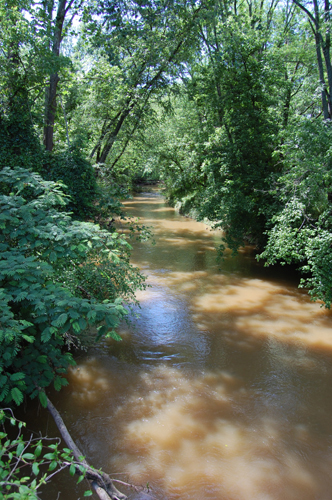
It was a slow and slack Saturday...
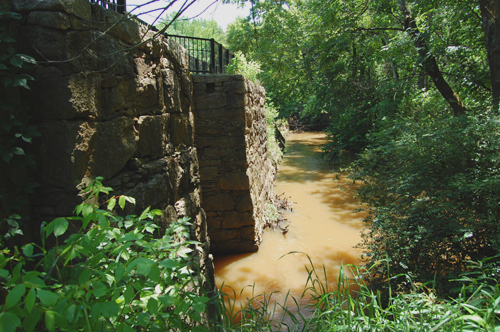
and the Enoree River was muddy and measured...
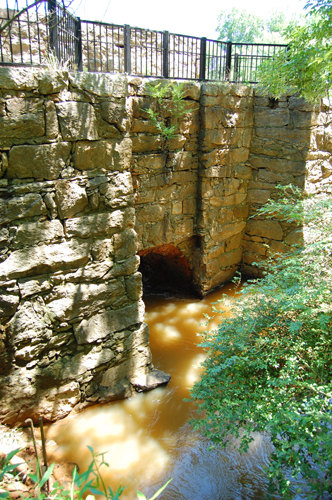
as it flowed towards its confluence with the Broad River.
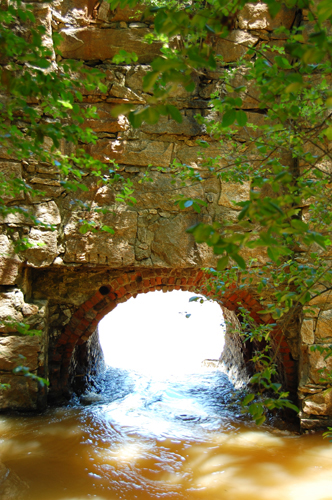
The river's course was obstructed by a large stone and mortar dam.
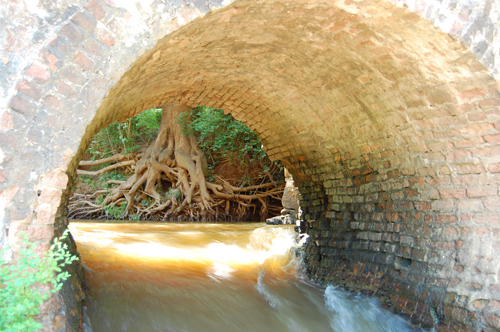
Water bottlenecked as it sought passage through the dam's six sluices.
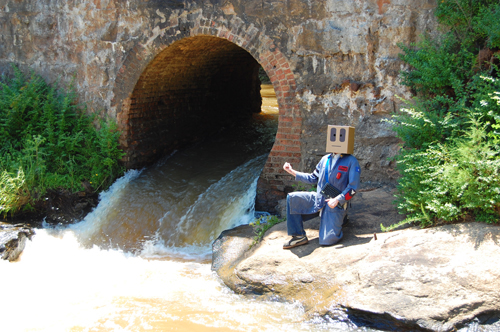
It was there, near the largest chute of the dam, that Slobot recalled the history of the site. |
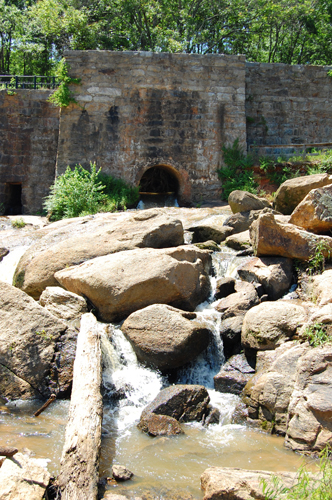
The Reverend Thomas Hutchings ( ~1789 - 1869) would come to Spartanburg from Rhode Island in 1816. |
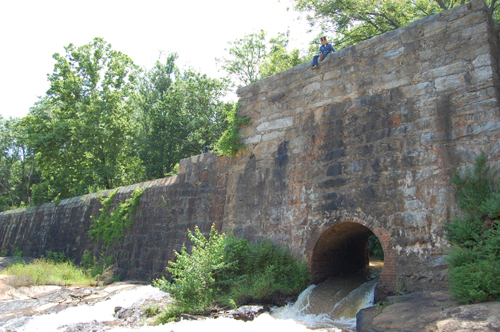
In ~1820 Rev. Hutchings would buy some 300 acres of land along the Enoree River on what is now the Greenville/Spartanburg county line. |
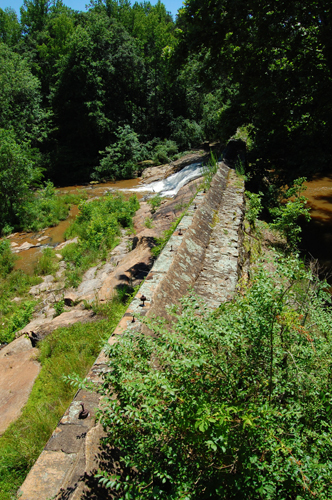
Soon Hutchings would be running a small factory, known as Buena Vista or Hutchings Factory. |

By 1821 Rev. Hutchings would have a new partner, John Courcier, and a second, larger mill building. |
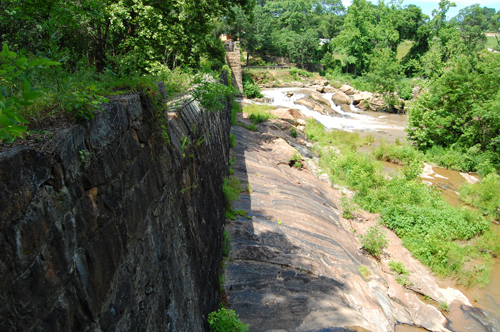
In ~1825 the larger of the two mills would be reduced to ashes.
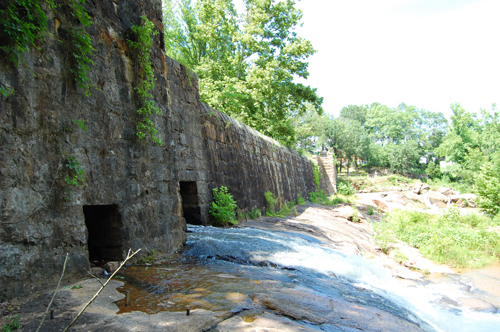
The Reverend Hutchings would fall into momentary monetary misfortune and, by 1828, Hutchings would be forced to sell his mill at auction. |
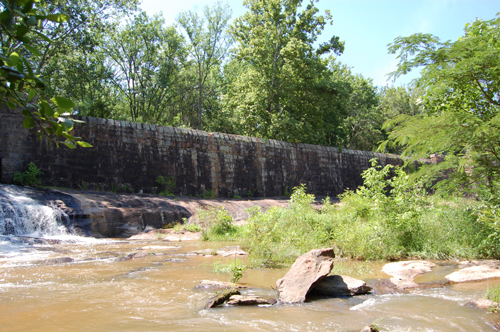
Phillip Crymes Lester, a local farmer, would be the high bidder at that auction. Lester and his partner, Josiah Kilgore, would run the factory, now sometimes known as Lester Factory, until 1853. |
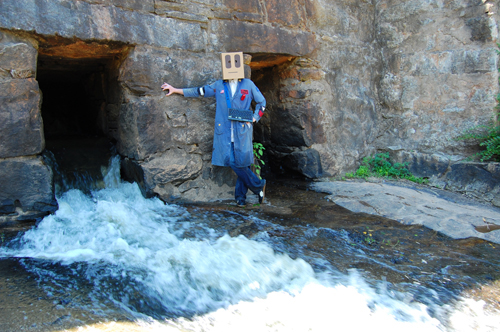
In that year, 1853, the mill would - for a second time - be devoured by hot licks of flame.
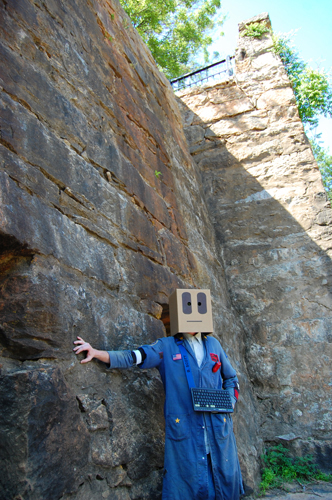
After the fire, Phillip Lester would buy out Kilgore and bring on his sons- William Francis, Archibald H. and George Washington - in the running of the mill. |
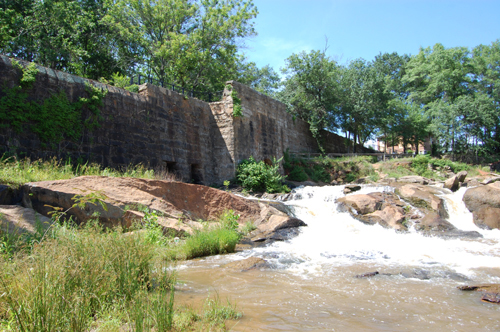
The elder Lester would pass away in 1862. The brothers Lester - now known professionally as Lester & Brothers - would continue to run the mill until ~1880. |
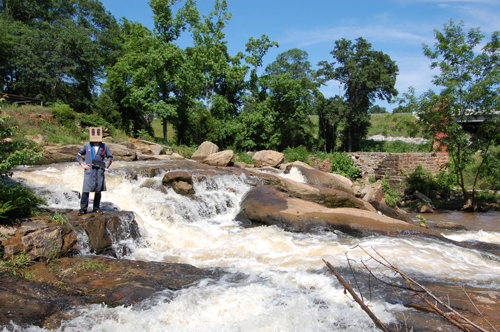
In 1880 the mill would find itself aging and outmoded. Bankruptcy would be declared and the property of Lester & Brothers would be sold at public auction. |
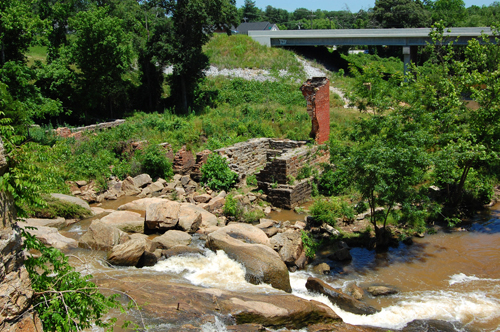
The Pelham Manufacturing Company would purchase the mills and, by 1882, the mills would formally adopt their new name, Pelham. |
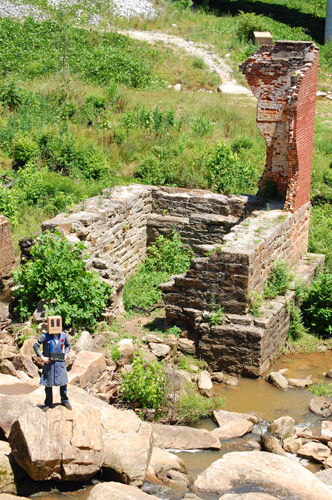
Between 1880 and 1890 there would be constructed across the Enoree a substantial, and extant, stone and mortar dam. |
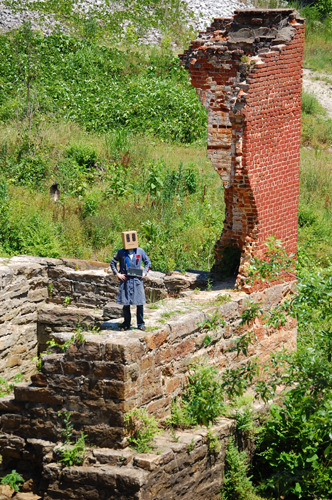
In 1890 the mill and its dam would be damaged by a flood, a flood that destroyed many of the old Buena Vista era structures. |
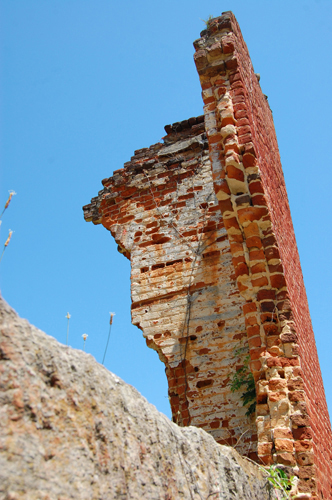
The Pelham Mills would enjoy some forty years of tranquility after the deluge of 1890. But, by the mid-1930s, the mills were aging and nearing obsolescence. In 1935 they would close for the last time, capping more than a century's worth of industry at the site. |
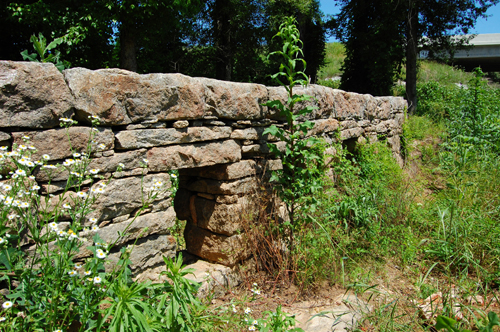
Between 1936 and 1940 the mill and its hardware would be scrapped and salvaged. |
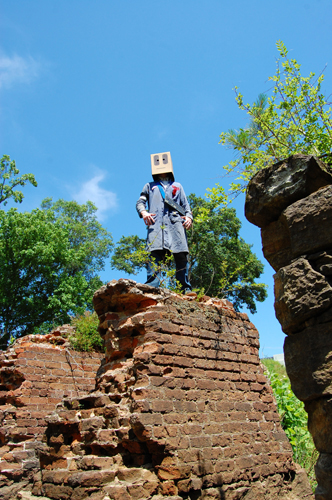
In ~1941 the mill buildings would burn for a third and final time.
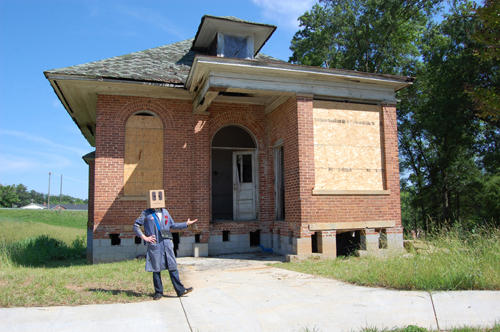
The only surviving building of the former Pelham Mills is this office, which is thought to have been built in ~1870. |
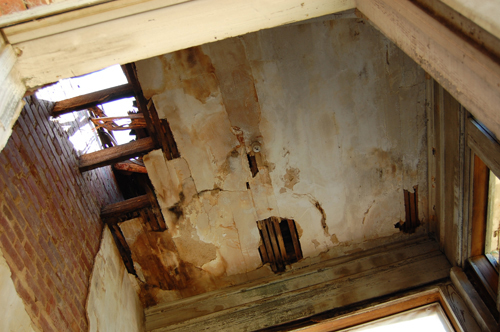
After the closing of mills the erstwhile Pelham Mills office would become the Pelham Post Office. In 1996 the post office would close and the building would sit vacant for a number of years. |
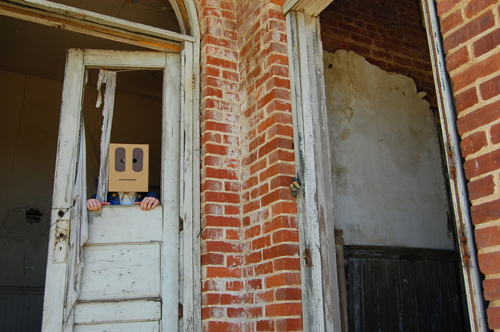
Abandoned and dilapidated, the building would nearly be demolished in order to make way for the new Highway 14 bridge over the Enoree. Luckily, on September 11, 2002, the former Pelham Mills office was moved to the north end of the Pelham dam. Today the Greenville County Recreation District is working towards turning the Pelham Mills site into Pelham Mill Park, which will include walking trails, a dog park and picnic areas. Slobot would like to thank the kind people of Pelham, the Greenville County Council, the Greenville County Recreation District, the Western Carolina Regional Sewer Authority and YOU! |
